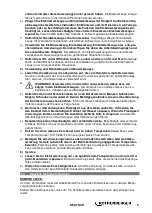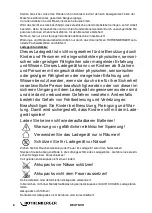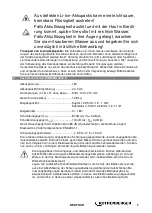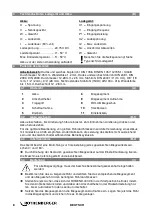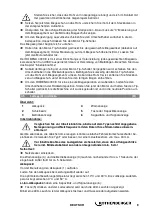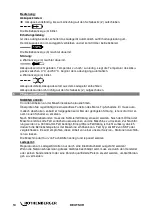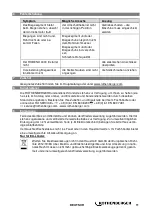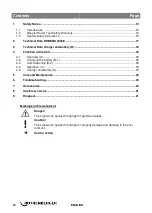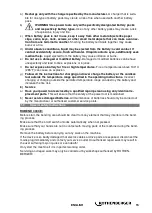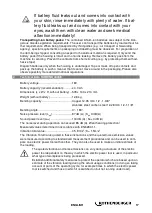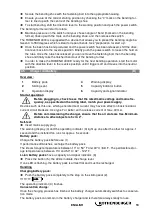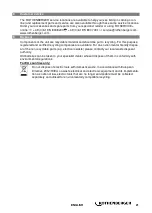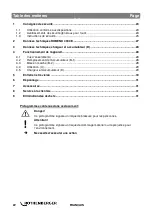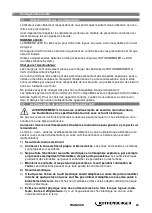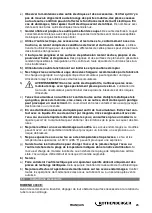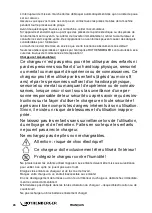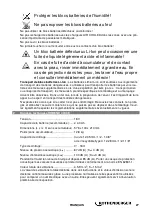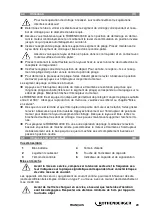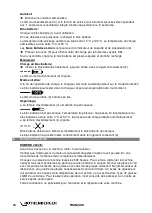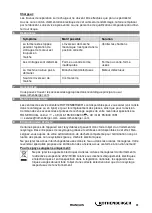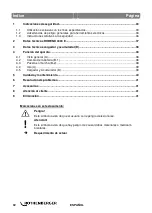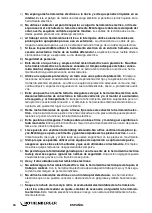
ENGLISH
19
Secure the bending shoe with the fastening bolt into the appropriate housing.
Ensure you are at the correct starting position by checking the “0” mark on the bending for-
mer is lined up with the centre of the bending shoe.
To start bending, shift the direction lever to the working position and push the power switch.
The bending former will start to rotate.
Maintain pressure on the switch until your chosen angle of bend (marked on the bending
former) lines up with the mark on the bending shoe, and then release the switch.
The ROBEND® 4000 is equipped with a device that allows you to preset the bending angle be-
tween 0 to 180 degrees which is ideal for repeat bends. See “preparation for start up”.
Once the been has bend produced and the power switch has been released, shift the direc-
tion lever back into the reverse position. Briefly push the power switch to loosen the hold on
the tube. Once the tube has released you can remove the fastening bolt, then the bending
shoe and finally take the finished bend out of the bending former.
In order to make the ROBEND 4000 E ready for the next bending operation, start the motor
with the direction lever in the reverse position until it triggers off and moves into the neutral
position.
4.5
Charger and battery
(D)
Overview:
1
Battery pack
4
Warning display
2
Sliding seat
5
Capacity indicator button
3
Operation display
6
Capacity and signal indicator
Start of operation
Before plugging in, check to see that the rated mains voltage and mains fre-
quency, as specified on the rating label, match your power supply.
Devices such as this one, which generate direct current, may have an effect on basic residual-
current circuit breakers. Use type F or better, with a release current of max. 30 mA.
Before commissioning the charger, ensure that the air slots are free. Minimum
distance to other objects is 5 cm/ 2".
Self-test:
Insert mains supply plug.
The warning display (4) and the operating indicator (3) light up one after the other for approx. 1
second and the installed fan runs for approx. 5 seconds.
Battery pack:
Charge the battery pack before use (1).
If performance diminishes, recharge the battery pack.
The ideal storage temperature is between 10°C / 50° F and 30°C / 86° F. The permissible stor-
age temperature is between 0°C and 50°C / 32° - 122° F.
Li-ion battery packs
have a capacity and signal indicator: (6)
Press the button (5), the LEDs indicate the charge level.
If one LED is flashing, the battery pack is almost flat and must be recharged.
Handling
Charging battery pack:
Push the battery pack completely to the stop on the sliding seat (2).
The operating indicator (3) flashes.
Conservation charge:
Once the charging process has finished, the battery charger automatically switches to conserva-
tion mode.
The battery pack can remain in the battery charger and is therefore always ready for use.

